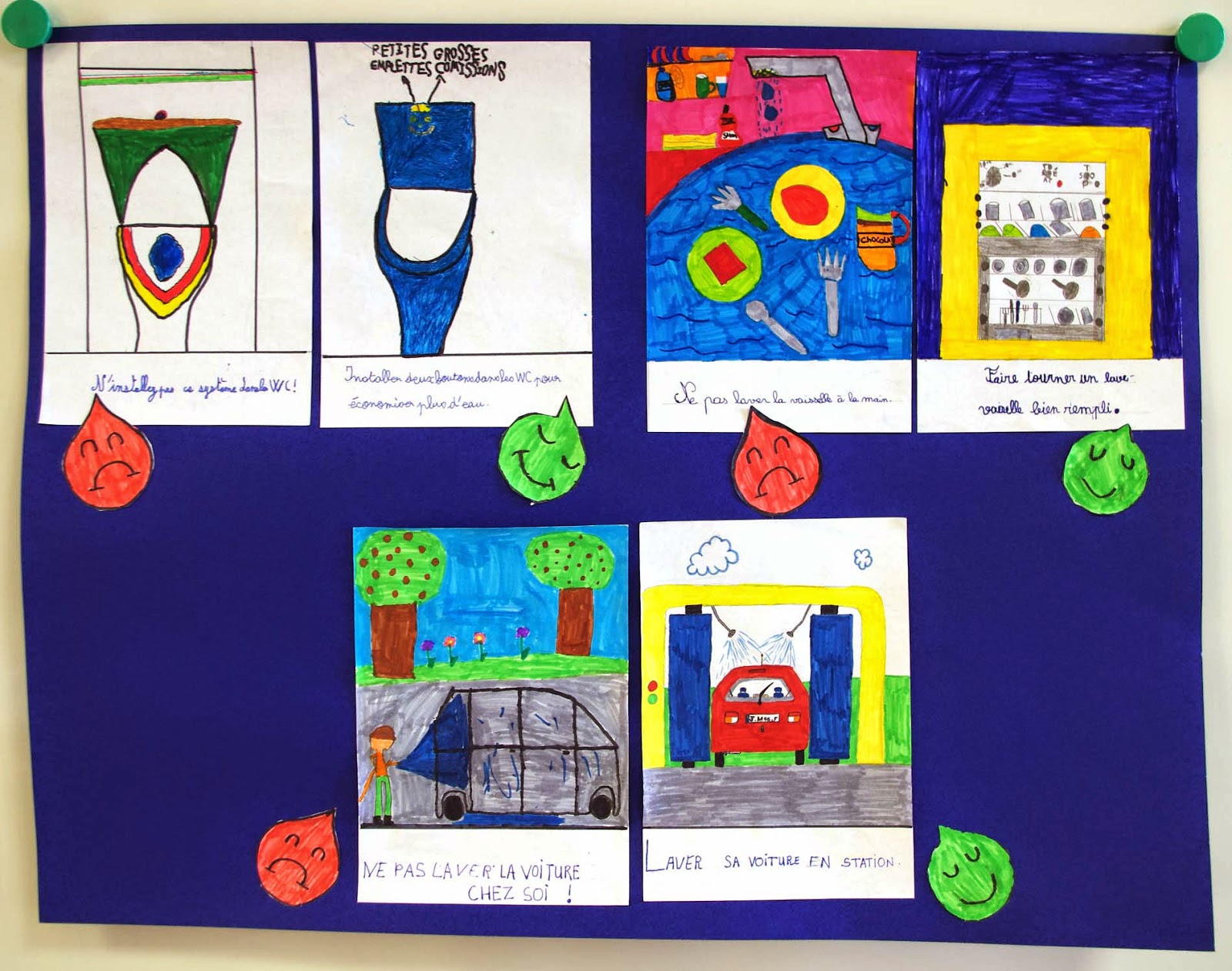La question posée aux élèves
est « qu’est-ce que la pression de l’eau ? »
Expérience :
Les élèves ont rempli 3
bouteilles identiques d’eau. Nous avions préalablement fait un trou dans chaque
bouteille (que nous avions bouché avec du scotch), à 3 hauteurs différentes.
Les élèves ont placé les 3
bouteilles remplies côte à côte et ont enlevé les scotchs. Ils ont observé ce
qui se passait dans chaque bouteille et à l’extérieur, les jets d’eau.
Conclusion : Dans les bouteilles, l’eau qui est en bas reçoit tout le poids de l’eau qui est au-dessus d’elle. Elle est comprimée et sort sous l’action d’une forte pression. C’est la force de pression de l’eau.
The
question asked to the pupils is " what the pressure of the water? "
Experiment:
The pupils
filled 3 identical bottles of water. We had beforehand made a hole
in every bottle (that we had filled with the adhesive tape, at 3
different heights.
The pupils
placed 3 filled bottles side by side and removed adhesive tapes. They observed
what took place in every bottle and outside, water jets.
Conclusion:
In bottles, the water which is below
receives all the weight of the water which is over her. It is
compressed and goes out under the effect of a strong pressure. It
is the strength of pressure of the water.

















































